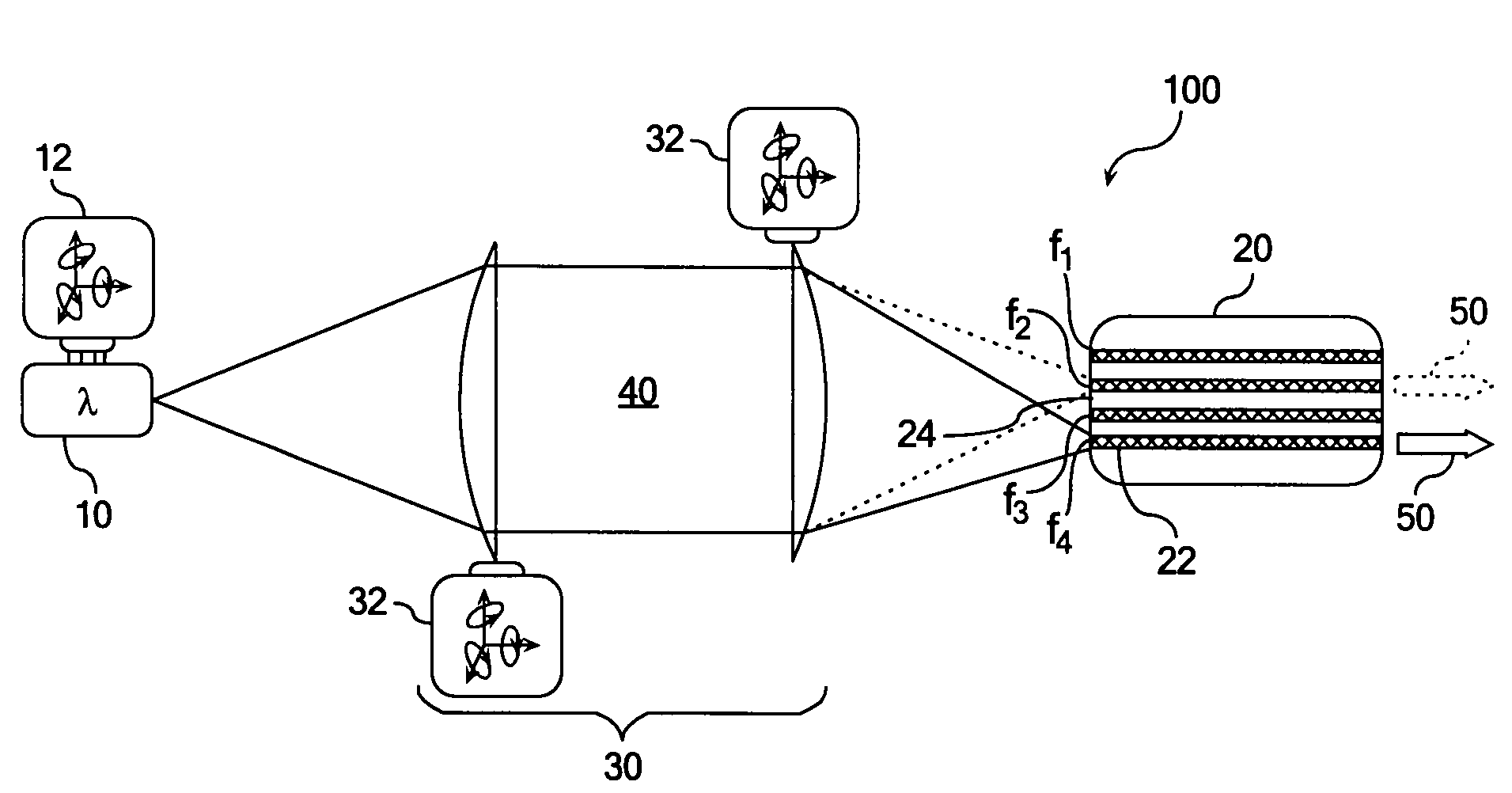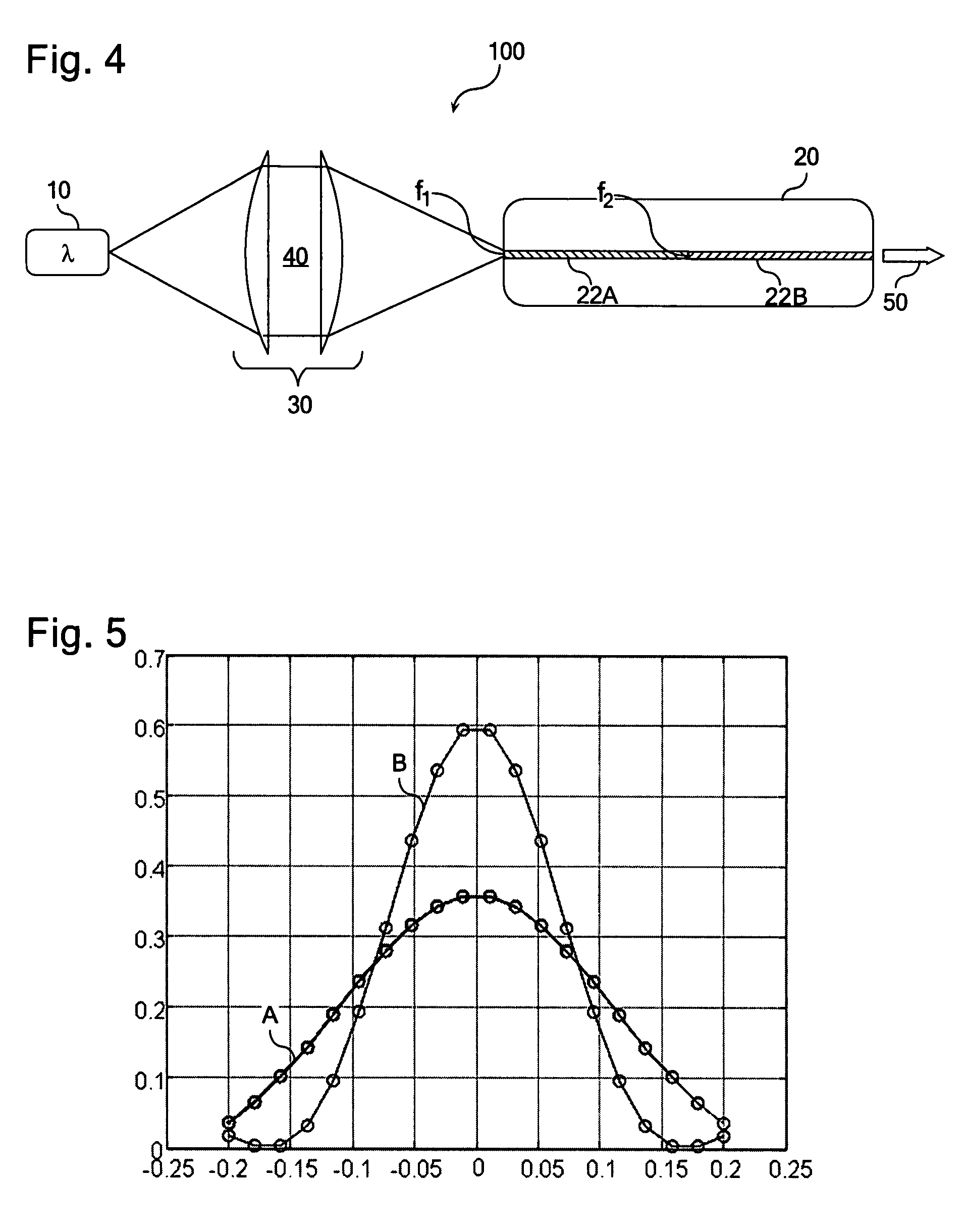Multi-component wavelength conversion devices and lasers incorporating the same
a wavelength conversion device and wavelength conversion technology, applied in the direction of laser details, instruments, light demodulation, etc., can solve the problems of image defects, reduce the conversion efficiency of the system, and the output wavelength of a semiconductor laser to move outside of this allowable bandwidth, so as to reduce the speckle effect of imag
- Summary
- Abstract
- Description
- Claims
- Application Information
AI Technical Summary
Benefits of technology
Problems solved by technology
Method used
Image
Examples
Embodiment Construction
[0014]Referring initially to FIG. 1, a frequency-converted laser source 100 according to one embodiment of the present invention is illustrated. The laser source 100 comprises a laser 10, a wavelength conversion device 20, and coupling optics 30 positioned along an optical path 40 defined between the laser 10 and the wavelength conversion device 30. Typically, the wavelength conversion device 20 is configured as a monolithic PPLN SHG crystal, or other suitable wavelength conversion material. The wavelength conversion device 20 converts the incident light into higher harmonic waves and outputs a wavelength-converted signal 50. This type of configuration is particularly useful in generating shorter wavelength laser beams from longer wavelength semiconductor lasers and can be used, for example, as a visible laser for laser projection systems.
[0015]The wavelength conversion device 20 comprises a plurality of waveguide components 22 comprising respective input faces positioned in an effe...
PUM
 Login to View More
Login to View More Abstract
Description
Claims
Application Information
 Login to View More
Login to View More - R&D
- Intellectual Property
- Life Sciences
- Materials
- Tech Scout
- Unparalleled Data Quality
- Higher Quality Content
- 60% Fewer Hallucinations
Browse by: Latest US Patents, China's latest patents, Technical Efficacy Thesaurus, Application Domain, Technology Topic, Popular Technical Reports.
© 2025 PatSnap. All rights reserved.Legal|Privacy policy|Modern Slavery Act Transparency Statement|Sitemap|About US| Contact US: help@patsnap.com



